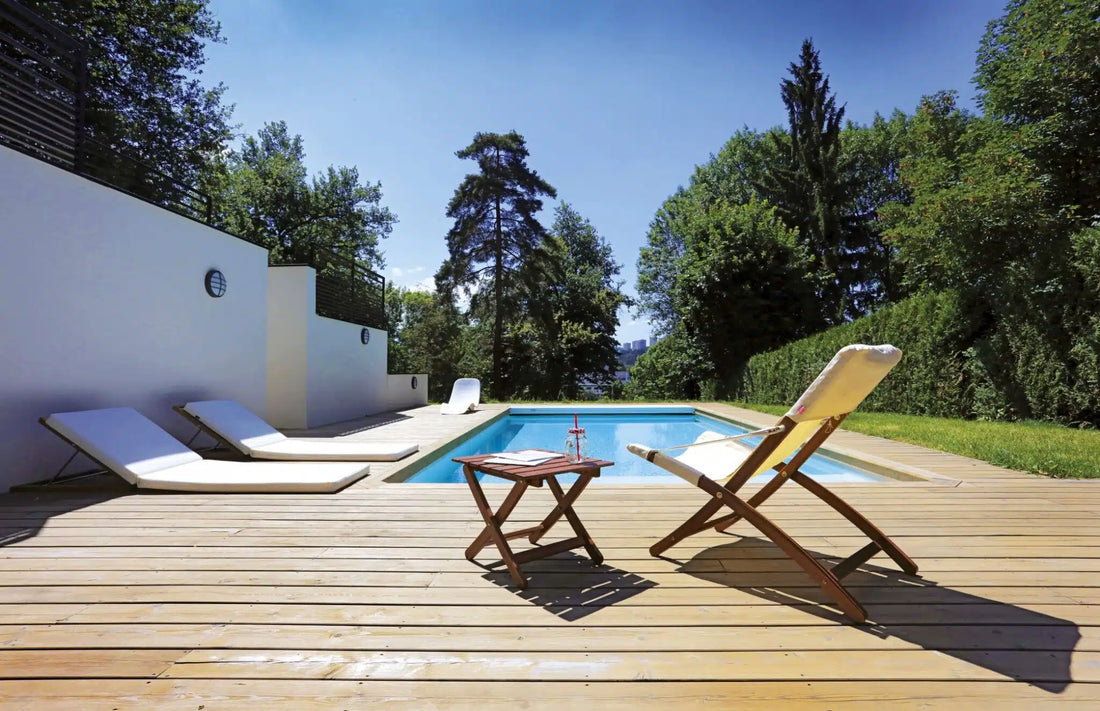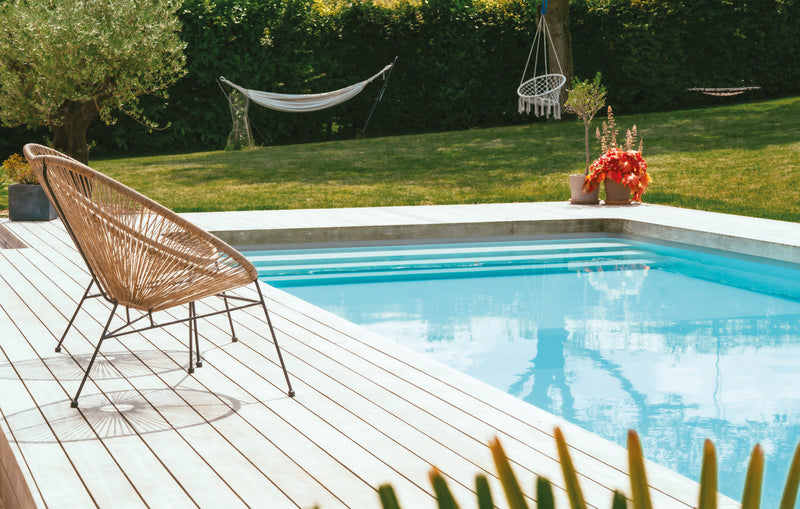- Welcome
- Desjoyaux advice
- fr_FR
-
Creases on the pool liner
Creases on the pool liner
Posté leThe liner is the waterproof membrane of your Desjoyaux pool. Installing a liner is a delicate operation that is best left to a professional.

Although it is not uncommon to have creases during installation, these disappear naturally when the pool is filled, the weight of the water crushing the creases on the pool liner.
If, despite proper installation (see our article How to install a swimming pool liner? ), creases remain, it is still possible to remove them.
HOW TO REMOVE WRINKLES FROM POOL LINER?
• Empty the basin a little
• Try to re-tighten the pool liner.
Again, it is best to call in a professional to ensure you get the desired result.
On the other hand, if the appearance of creases occurs well after the installation of your liner, it will be necessary to identify the cause of these creases.
WHY DO WRINKLES FORM ON THE LINER?
CHEMICAL AND/OR THERMAL VARIATIONS IN POOL WATER:
First, there are the creases that are due to strong chemical or thermal variations in the pool. They are easy to identify since they look more like small wrinkles than actual creases. We know that the liner is a PVC sheet that is very sensitive to chemical or thermal attacks.
The factors that prematurely wear out the material and modify its performance are:
• A pH that is too acidic,
• Too high a chlorine level,
• A high water temperature.
The liner then becomes more porous and loses its elasticity, which ultimately causes the appearance of fine lines.
To preserve the youthfulness of your liner, it is important to properly control your water treatment and not overheat the water in your pool.
Unfortunately, once formed, these creases remain indelible and are often a sign of premature weakness of the material. The only option is then to replace the liner and renovate your pool .
WATER INFILTRATIONS UNDER THE POOL LINER:
There are two possible causes of water infiltration under the liner:
• An overflow of the pool which causes pool water to pass behind the liner,
• Exceptional rainfall which causes water to rise by capillarity.
In either case, the first thing to do is to lower the water level in the pool and try to suck up the water that has gotten under the liner to tighten it. If the water is coming from the ground, it may be necessary to drain the ground to remove this excess water.
Waterlogged land during swimming pool construction is generally drained and fitted with a pressure relief well before the pool is built to avoid these problems.
A LEAK IN THE LINER:
Finally, a leak in the liner is also a source of creases since, once again, pool water will seep under the liner. Leak detection carried out by a qualified professional will allow the leak to be located and sealed.
If you have creases in your pool liner, it is advisable to contact a qualified professional near you , who will be able to identify the cause of the creases and advise you whether the liner can be repaired or whether you should consider renovating your pool .

